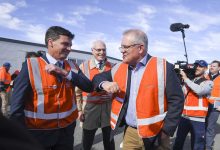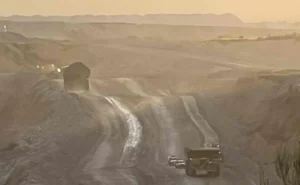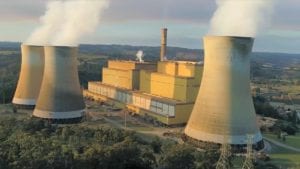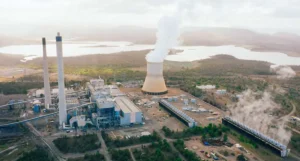When the former anti-wind activist Angus Taylor was given the federal energy portfolio by the then newly appointed prime minister Scott Morrison in late 2018, he made his intentions very clear.
“There’s too much wind and solar in the grid,” he declared. And he might have even been able to raise a quorum of people to support him at the time, at least in the LNP and the fossil fuel industry.
Four years on, the country’s energy and emissions reduction minister has achieved a rare moment of consensus in the industry: It’s not that there is too much wind and solar, even though there is four times the amount that was in place when Taylor got his appointment. The biggest issue now is that there is too much Angus Taylor. And the industry is over it.
Australia’s green energy transition promises so much, and some key statistics generate excitement – the uptake of rooftop solar across the country, the world leading 64 per cent share of wind and solar in South Australia, the roll out of batteries, and the expectation that within three years Australia’s main grid could run on 100 per cent renewables at certain times.
Some extraordinary work is being done. The Australian Energy Market Operator has laid out a 20-year blueprint to transition to a zero emissions grid, Matt Kean has seized the reins in NSW to plot a path to engineer the switch from coal to renewables in a decade, and two billionaires – Andrew Forrest and Mike Cannon-Brookes – are taking major steps to accelerate that transition.
There are multiple other great stories too, of vision and technology brilliance. But despite all this, and the tens of billions of green capital queuing to be deployed, the green energy transition in Australia is piecemeal and in turmoil, and in danger of being too slow.
The pace of wind and solar connections to the grid has slowed to a trickle. Regulators and rule makers are still struggling to catch up with the pace of change. There is no leadership from the federal government, and there is no plan. Science is ignored, and so is technology. And it appears to be entirely by design.
Taylor is now widely regarded as the most useless energy minister in living memory: A giant bollard standing in the way of smart policy and huge investments. And, as his exclusion from negotiations over the early closure of Eraring between Origin, Kean and AEMO clearly illustrates, he is not trusted by the industry.
Taylor has been a spectacular failure in almost everything he has touched. Even his one claim of success – lowering electricity prices – is a matter of timing, and rather like a second half substitute claiming credit for goals scored in the first half of a game.
It should not be forgotten that the price falls enjoyed until recently are entirely due to the very actions – policies to encourage more wind and solar – of the last Labor government that Taylor railed against and his government tried to kill.
The price jump that has occurred in the last few months highlight the very folly of committing to fossil fuels. Taylor’s so-called “big stick” policy to cap price rises is useless in the face of soaring coal and gas prices, coal plant failures, market domination, and the lack of preparation.
(And how very convenient that the Australian Energy Regulator has decided to put off its deliberations on how these price jumps can be passed on to consumers until after the election. Labor, should it win office, will almost certainly be blamed for the bill hikes to follow).
See: Soaring electricity prices start to bite, but worst delayed until after election
But Taylor is just the most obvious symptom of a diseased government that has been in power for nine years now, and clearly in the thrall of coal, oil and gas barons, and led by the nose by climate and technology deniers.
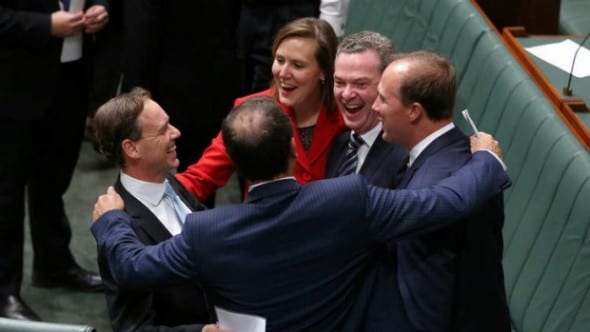
Its ministers have danced with joy in the House of Representatives after killing the carbon price (above), and its current leader brought a lump of coal into the same chamber to wave around and tell the Australian people that they shouldn’t be afraid (below).
Data and analysis released this week shows why the Australian people should be afraid. Very afraid. The level of CO2 in the atmosphere has reached a new record of 421 parts per million. The last seven years have been the hottest seven years on record, even with the mitigating effects of La Niña.
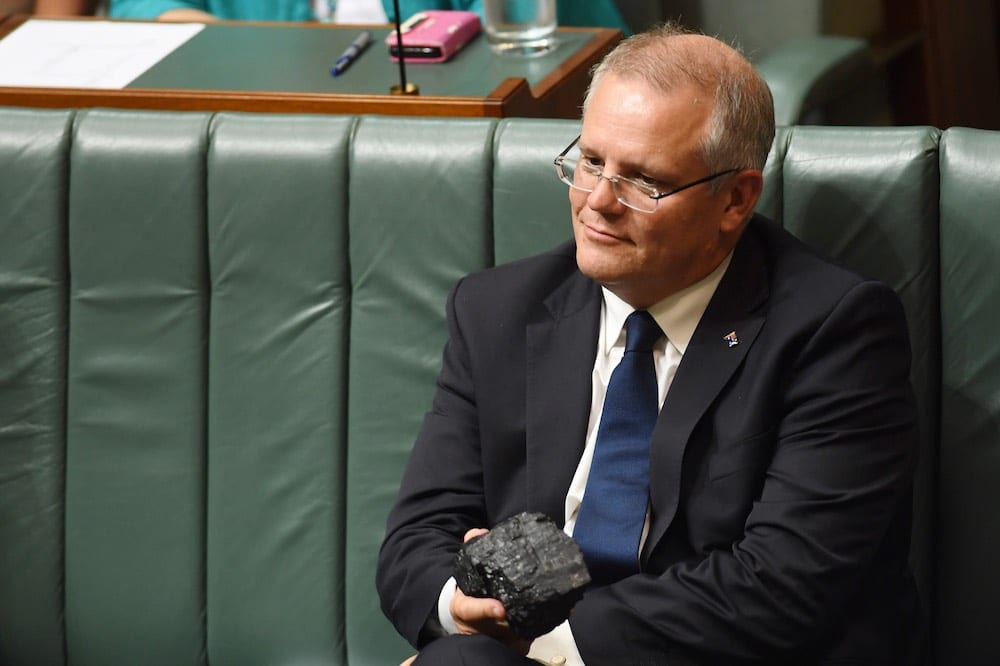
Ocean temperatures are soaring. Oceans are more acidic, and they are rising. The door to a 1.5°C outcome – scary enough – is nearly shut, and the opportunity to cap average global warming at an average 2°C is rapidly closing.
The message from experts, the UN, and even the International Energy Agency is clear – no new coal and gas plants, no new coal and gas mines. Close down fossil fuel generation quickly. Build renewables.
The extraordinary measures announced by the European Commission this week highlight the efforts that can and must be taken to switch from coal, gas and oil – even if they are driven by a hatred of Russia’s invasion of Ukraine.
Australia needs to move quickly. As former CEFC boss (and one time independent candidate) and now Sentient Impact Investment CEO Oliver Yates points out in this week’s episode of the Energy Insiders podcast, Australia – for all its promise and plans – is in danger of falling behind in the switch to technologies such as green hydrogen.
Labor clearly has much better policies than the Coalition, even if its own 43 per cent emissions reduction target for 2030 is that of a party determined to make itself a small target, still traumatised by the 2019 poll, and still struggling to win over key elements of its own caucus.
But at least it’s not afraid of new technologies. It wants to embrace them. Simply removing those policy bollards, cleaning out some of the dead wood in key institutions, and showing some political leadership will open the floodgates of investment into new green industries.
There is absolutely no doubt that the Coalition government has to go. It simply must. It’s beholden to the far right and vested interests, and terrified of Sky News. It’s a clear and present danger to the future of the country.
James Patterson, one of the many former Institute of Public Affairs people now trying to pass off as “moderates” in the Liberal Party, indicated on ABC’s Q&A program on Thursday that even a majority Labor government would be preferable to a minority Coalition having to negotiate with the independents.
That pretty much underlines the LNP’s inability, or desire, to move on anything, but others are not so scared of dealing with intelligent independents engaged on important issues.
The energy industry has seen Labor in action, and the bastardised CPRS that it produced under Kevin Rudd when it had majority power, and the excellent Clean Energy package it framed when Julia Gillard was forced to go to the table with the Greens and independents.
It’s for that reason that virtually everyone in the industry is also hopeful that the Teal independents, and the Greens, will have the opportunity to be at the table.
A minority government is a delicate wish, because it doesn’t take much to tip the table too far one way or another, and the very idea of minority government might be too much for the conservatives and the Murdoch media, and uncomfortable for Labor.
A minority government would, however, help focus the mind on the task at hand. The stakes have never been higher. It’s not too late. But it may be soon.

